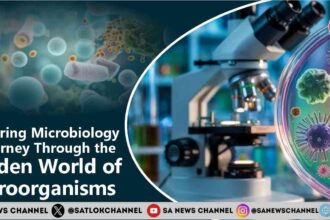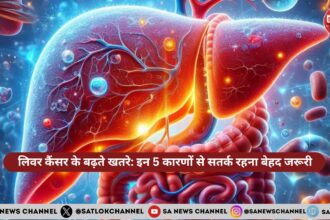Scientists have discovered compounds that inhibit the development of the Plasmodium falciparum parasite in Anopheles mosquitoes.Targeting it during this stage could enhance malaria control efforts, especially in resource-poor areas where the disease is prevalent.
- Current malaria scenario
- Criticism and preventive measures
- Innovative compounds
- A promising candidate
- Applications in Mosquito Nets
- Public Health Breakthrough with Community Impact
- Resistance and security
- Cost-effectiveness and future prospects
- Spiritual Wisdom and Science: A Balanced Path Forward
- FAQs: New Malaria Control Compounds
Current malaria scenario
In 2023, the World Health Organization reported 263 million cases of malaria, a 4.3% increase from 2022. Most of the cases and deaths occurred in African countries. In 2024, despite India’s exit from WHO’s High-Burden to High-Impact (HBHI) group, malaria remains a concern. About 95% of India’s population lives in areas where malaria is endemic.
Criticism and preventive measures
The rollout of WHO-recommended vaccines, RTS, S and R21, has improved malaria prevention. However, treatment with insecticides is important. Unfortunately, the effectiveness of insecticide-treated nets decreases as resistance develops in mosquitoes. The new research aims to address this limitation.
Innovative compounds
This research examined 81 compounds known to have antimalarial properties. The focus is on mosquito-stage Plasmodium falciparum, in its early developmental stages. After applying the compounds to female Anopheles gambiae mosquitoes, the researchers assessed the parasite burden one week later.
A promising candidate
Of the tested compounds, 22 showed potential to reduce parasite infection. Remarkably, endochin-like quinolones (ELQs) demonstrated strong efficacy. ELQ-456 completely inhibited infection, while ELQ-331 reduced the spread of infection. These compounds also proved effective against insecticide-resistant mosquitoes.
Applications in Mosquito Nets
The researchers incorporated the ELQ compounds into polyethylene films, similar to those used in pesticide-treated nets. These films effectively prevented parasite development even after one year of storage. This suggests a practical application for malaria control in various settings.
Public Health Breakthrough with Community Impact
This discovery comes as a potential game-changer for malaria-endemic communities, especially in sub-Saharan Africa and South Asia.
With over 95% of India’s population living in at-risk areas, integrating ELQ-based mosquito control into public health policies can reduce dependency on traditional insecticides and help break transmission chains. As drug resistance and climate change complicate the malaria landscape, innovations like ELQ-456 offer hope to millions vulnerable to seasonal outbreaks and stagnant healthcare support.
Resistance and security
The study assessed the potential for antimicrobial resistance in parasites. Importantly, ELQ compounds did not produce cross-resistance, meaning that they remain effective even against mutated strains of the parasite.
Cost-effectiveness and future prospects
The simple synthesis of these compounds indicates potential cost-effectiveness. With further adaptation and mass production, these compounds could become a valuable addition to malaria prevention strategies, especially in competitive markets.
Spiritual Wisdom and Science: A Balanced Path Forward
While science offers us advanced tools to control diseases like malaria, true transformation begins when society aligns with holistic well-being.
Satgyan—as shared by enlightened saints like Sant Rampal Ji Maharaj—teaches that healing is not just physical but spiritual. Clean surroundings, compassion-driven research, and equitable healthcare access are all part of a balanced life in harmony with nature.
Scientific innovation like ELQ compounds should not merely aim to cure, but also to serve humanity with integrity and empathy.
FAQs: New Malaria Control Compounds
Q: Which mosquito transmits malaria?
A: Female Anopheles mosquito.
Q: Who discovered malaria?
A: Sir Ronald Ross discovered the malaria parasite.
Q: What are the four types of malaria?
A: P. falciparum, P. vivax, P. ovale, and P. malariae.
Q: How long does malaria fever last?
A: The classic fever cycle of malaria usually lasts 6–10 hours and repeats every other day.









